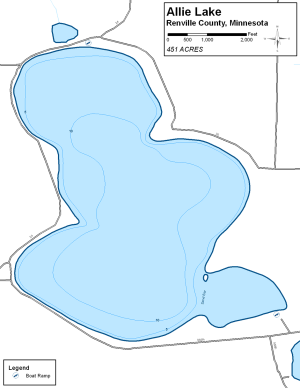Today's Best Fishing Times
Get the best fishing times for Lake Allie with Lake-Link's Fishing Forecast. SEE MORE
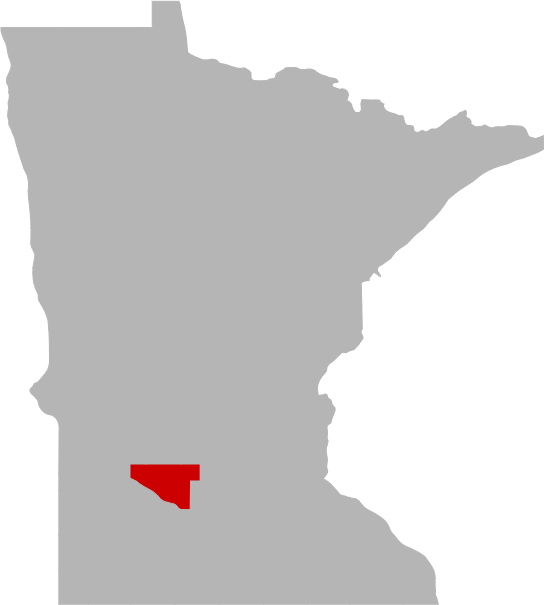

Share Your Catch & Win!
Frequently Asked Questions About Lake Allie, MN
- How big is Lake Allie?
- How deep is Lake Allie?
- What kind of fish can you catch in Lake Allie?
- What are the closest cities to Lake Allie?
- Are there places to stay in the Lake Allie area?
- Are there topographical lake maps available Lake Allie?
- Are there boat launches on Lake Allie?
- Are there places to eat and drink near Lake Allie?
- What is the average air temp for Lake Allie?
How big is Lake Allie?
How deep is Lake Allie?
What kind of fish can you catch in Lake Allie?
Other fish species in the lake include Fathead Minnow, Golden Shiner, Green Sunfish, Hybrid Sunfish, Johnny Darter, Orangespotted Sunfish and White Sucker.
What are the closest cities to Lake Allie?
Are there places to stay in the Lake Allie area?
More Lodging Options
Are there topographical lake maps available Lake Allie?
Are there boat launches on Lake Allie?
Are there places to eat and drink near Lake Allie?
Explore the Lake Allie area in a RV
Are you looking for an adventurous vacation option that won't break the bank? Look no further than renting an RV! Contrary to popular belief, the process is much simpler than you might imagine. With just a few easy steps, you'll soon be experiencing the ultimate freedom and convenience of exploring the open road in your very own recreational vehicle. And the best part? RV travel can save you up to 60% compared to other types of vacations! With the money you'll save, you'll be able to travel even more and create unforgettable memories along the way. So why wait? Start planning your next adventure today with an RV rental. Learn more about renting a RV.
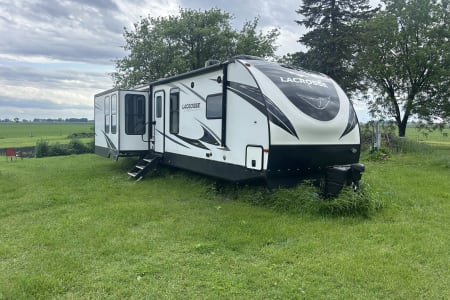

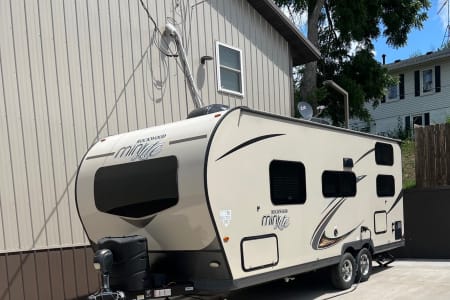
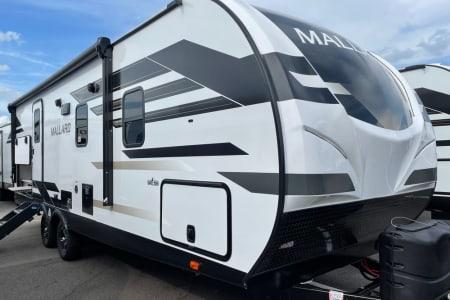
History & Status of the Fishery
A standard survey was conducted at Allie Lake beginning on July 8, 2019, to monitor the lake's fish population and to evaluate the 1994 Walleye fry stocking regime. Allie is a class 43 lake and net catches were compared to other similar lakes around the state. The 2016 MNDNR Fisheries lake management plan (LMP) listed Walleye as the only primary management species at Allie Lake. Black Crappie, Bluegill, and Northern Pike were listed as secondary management species. In 2019, a total of 11 species, plus Hybrid Sunfish, were sampled in the gill nets (GN) and trap nets (TN). The dissolved oxygen concentration was 5.0 mg/l, just off the bottom in 12 feet of water, indicating that fish could be found throughout the entire water column this time of year. Water clarity was fair to poor with a secchi disk reading of 4.5 feet, due to an algae bloom. Allie has a rare history of winterkill, but a partial kill did occur in 2008. A fishing pier is available at the Renville County RV Park on the lake's west shore. Curlyleaf pondweed, a type a submergent vegetation, can be abundant in May and June at Allie, occasionally reaching nuisance levels in parts of the lake.
Gill nets sampled moderate numbers of Walleye (48) for a catch rate of 5.3/net, which was within the normal range for this type of lake. The 2016 LMP's long range goal for Walleye (4.0 to 18.0/net) was met. Walleye were the most abundant fish sampled by GN in 2019. The 2015 GN catch rate was higher at 24.3/net. The latest six GN catch rates (1994 to 2019) were all within the lake class normal range (2.3 to 18.1) or above it. Historical catch rates from 1976 to 2019 (n=12), under various Walleye stocking regimes, were variable ranging from 0.0 to 24.3/net with an average of 6.1. In 2019, gill netted Walleye were 9.5 to 24.4 inches long, averaging 17.1 inches. Trap nets sampled Walleye up to 25.8 inches in length. Gill netted Walleye were estimated to be age-1 to age-7 with seven year classes present. None of the year classes were ranked as being strong, but the 2016 and 2017 year classes were considered moderate in size. Growth for age-3 fish was fast. In 2019, non-stocked years accounted for 28% of the GN aged Walleye, indicating that natural reproduction was occurring. The contribution from natural reproduction during fry stocked years remained unknown, due to the inability to differentiate between the two groups. Gill net catch rates from 2000 to 2019 (n=5), during the 1994 stocking regime (509,000 fry stocked 2 of 3 years), ranged from 4.9 to 24.3/net with an average of 11.1, possibly indicating a successful fry stocking strategy. Walleye anglers can usually expect decent action at Allie Lake.
Gill nets sampled low numbers of Northern Pike (5) for a catch rate of 0.6/net, which was below the normal range for this type of lake. The 2015 catch rate was also low at 1.7/net. The 2016 LMP's long range goal (>1.1/net) was not met. Historic catch rates from 1976 to 2019 (n=12) were all low, ranging from 0.2 to 4.0/net with an average of 1.7/GN. Historically, recruitment would be classified as low, despite numerous stockings (1970's through the 2000's). Northern Pike were last stocked in 2008, following a partial winterkill. In 2019, gill netted Northern Pike were 21.8 to 25.7 inches long with an average of 23.8 inches. Trap nets sampled Northern Pike up to 33.2 inches in length. Low Northern Pike abundance over the last 30 years has likely allowed Walleye to flourish at Allie Lake. Allie is included in the 2018 Northern Pike Southern Management Zone regulation area, adopted in 2018, which has a 24 inch minimum size limit in place (all pike less than 24 inches must be immediately released) and two fish bag limit designed to increase pike abundance, take advantage of fast growth, and improve the size of harvested fish.
Trap nets sampled low numbers (5) of Black Crappie in 2019 for a catch rate of 0.6/net, which was below the normal range for this type of lake. This was the second lowest TN catch rate ever measured at Allie Lake. The 2016 LMP's long range goal (>1.2) was not met. The 2015 Black Crappie TN catch rate was 0.3/net, the lowest ever recorded. Historic TN catch rates from 1976 to 2019 (n=12) were highly variable, ranging from 0.3 to 75.9/net with an average of 21.7. The four most recent TN catch rates (2005 to 2019) have all indicated low abundance for this species. In 2019, trap netted Black Crappie were 5.2 to 12.8 inches long with an average of 8.9 inches. Gill nets also sampled low numbers (2) of Black Crappie for a catch rate of 0.2/net, which was also below the normal range for this type of lake. This was the second lowest Black Crappie GN catch rate ever recorded at Allie. The latest four GN catch rates (2005 to 2019) were all low, indicating unusually low abundance over the last 14 years. Historic GN catch rates from 1976 to 2019 (n=12) were highly variable, ranging from 0.0 to 95.5/net with an average of 17.7. In 2019, the two gill netted Black Crappie were 5.7 and 8.7 inches long.
Trap nets sampled moderate numbers of Bluegill (159) for a catch rate of 17.7/net which was within the normal range for this type of lake. Bluegill were the most abundant fish sampled in 2019 TN's. The 2016 LMP's Bluegill long-range goal (maintain presence) was met. The 2005, 2008, and 2015 catch rates were much lower, ranging from 1.8 to 3.8/net. Historic TN catch rates from 1976 to 2019 (n=12) were highly variable, ranging from 0.4 to 492.0/net, with an average of 71.3. Bluegill were last stocked in 2008, following the partial winterkill. That stocking effort appeared to have had little effect, as the TN catch rate in 2015 was only 2.0/net. In 2019, trap netted Bluegill were 2.8 to 9.7 inches long averaging 5.3 inches. Approximately 22% of the catch was 6 inches longer. The TN fish length table indicated that two or three younger year classes made up the majority of the catch, and that recruitment had become more consistent since the 2015 survey. The exact reason for the increased recruitment was unknown. As of 2019, Bluegill anglers could expect decent action from mostly smaller sized fish, but keeper sized fish were also present.
Gill nets sampled low numbers of Channel Catfish (7) for a catch rate of 0.8/net, indicating low abundance for this species. The 2015 GN catch rate (1.2/net) was also low. Historic catch rates from 1976 to 2019 (n=12) were mostly low, ranging from 0.0 to 4.0/net with an average of 1.3. In 2019, gill netted Channel Catfish were 15.3 to 27.7 inches long averaging an impressive 24.8 inches. Channel Catfish were last stocked in 1989. The GN and TN fish length tables indicated that catfish recruitment was inconsistent, but the species has persisted through natural reproduction for many years.
Gill nets sampled low numbers of Yellow Perch (41) for a catch rate of 4.6/net, which was within the normal range for this type of lake. Yellow Perch have not been sampled in high numbers at Allie since 1987 (161.5/net). All GN catches since 1987 (n=7) were less than 6.0/net. Historic perch GN catch rates from 1976 to 2019 (n=12) were highly variable ranging from 0.2 to 161.5/net with an average of 31.8. In 2019, gill netted Yellow Perch were 5.4 to 8.8 inches long averaging 6.1 inches. Yellow Perch are an important forage item for Walleye at Allie Lake, and likely at sizes too small to be picked up in gill nets and trap nets. Occasionally, anglers get into a few 9 to 10 inch perch at Allie.
Trap nets sampled moderate numbers of Common Carp (34) for a catch rate of 3.8/net, which was within the normal range for this type of lake. Historic carp TN catch rates (n=12) from 1976 to 2019 were highly variable, ranging from 0.6 to 57.1/net with an average of 7.9. In 2019, trap netted Common Carp were 18.7 to 31.1 inches long averaging 22.5 inches. Gill nets sampled moderate numbers of Common Carp (22) for a catch rate of 2.4/net, which was also within the normal range for this type of lake. Historic GN catch rates were variable, ranging from 0.0 to 7.7/net with an average of 2.7. In 2019, gill netted Common Carp were 19.6 to 29.3 inches long with an average of 22.1. Nothing fights like a carp, and anglers and bow fishermen should have decent luck at Allie.
Gill nets did not sample any Black Bullhead for a catch rate of 0.0/net, which was below the normal range for this type of lake, and the lowest catch on record at Allie. The latest five catch rates (2000 to 2019) were all less than 2.2/net, indicating that low numbers were present over the last 20 years. Historic GN catch rates from 1976 to 2019 (n=12) were highly variable, ranging from 0.0 to 309.6/net with an average of 99.5. In 2019, trap nets also failed to sample any Black Bullhead for a catch rate of 0.0/net which was below the lake's normal range and tied for the lowest catch on record at Allie. Trap net catches (n=5), from 2000 to 2019, showed a similar pattern to GN catches during that time period, with all the TN catch rates being less than 0.4/net, indicating very low abundance. Data indicated that an ecological shift, favoring lower numbers of Black Bullhead, had occurred over the last 20 years, but the exact reason for the trend was unknown. Bullhead anglers may want to try a different lake.
Additional fishes sampled in the standard gear included; Green Sunfish, Hybrid Sunfish, Orangespotted Sunfish, Shovelnose Sturgeon (first time sampled at Allie, likely an illegal stocking), and White Sucker.
What is the average air temp for Lake Allie?
More Nearby Lakes To Explore
There's more lake's to explore around Lake Allie...| DISTANCE | ACRES | MAX DEPTH | |
| Preston Lake | 1.7 mi | 655 | 11 ft |
| Phare Lake | 1.8 mi | 136 | |
| DAAK WMA | 2.5 mi | 10 | |
| Hodgson Lake | 2.9 mi | 143 | |
| Boon Lake | 5.5 mi | 764 | |
| Eagle Lake | 5.5 mi | 348 | |
| Unnamed Lake | 6.3 mi | 22 | |
| Unnamed Lake | 6.9 mi | 17 | |
| Barber Lake | 7.0 mi | 133 | |
| Lake Whitney | 7.1 mi | 133 |





